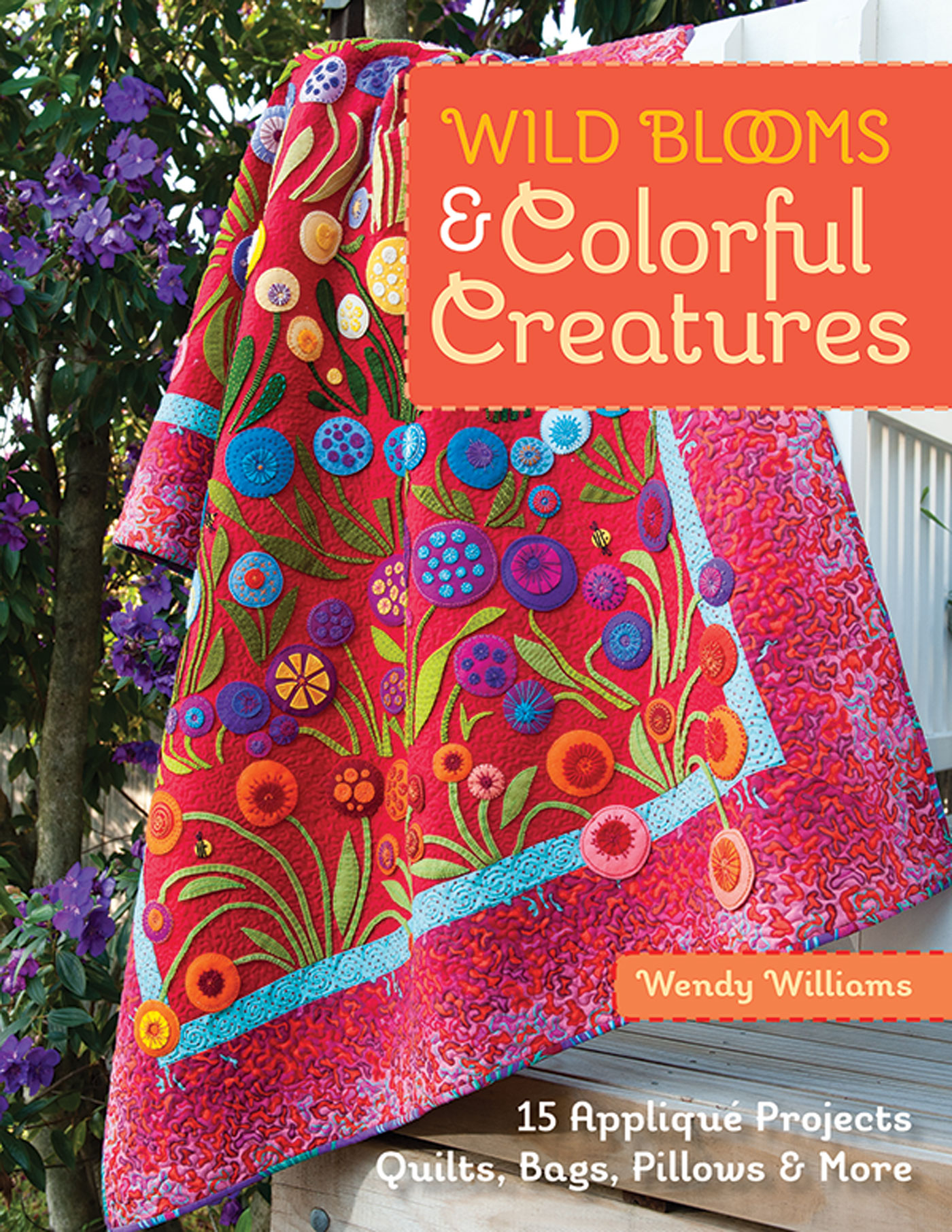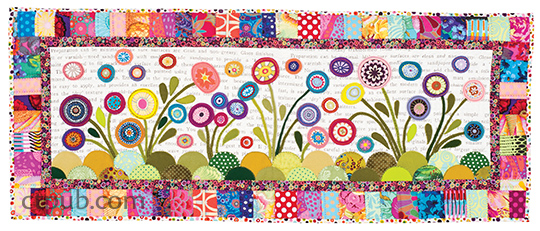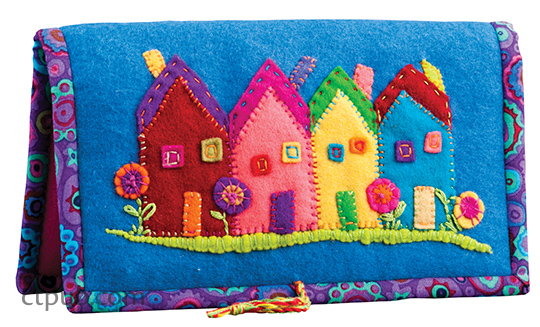Wool Appliqué Basics
Jun 16th 2020
The following information is from Wild Blooms & Colorful Creatures by Wendy Williams. Learn some helpful tips with wool, cotton, and appliqué basics! Plus, scroll to the bottom of the blog for a chance to win an ebook copy.

Combining Wool and Cotton
We are all used to working with traditional cotton fabrics for our quilts. Combining linen and wool with cotton adds a new dimension. Use fabrics with designs such as flowers, circles, leaves, and paisleys for flower centers, birds, butterflies, and dragonflies. The prints add interest, light, and shade, as well as a little more punch, especially when they are fussy cut.
After working on a few of these projects, you will start to look at fabrics with a different eye. The simple shapes for the appliqué are easy to cut and stitch, and one project tends to lead to another. Soon you will end up with a variety of completed masterpieces. This is a time to throw caution to the wind and try something new where there are few rules.

Appliqué Basics
Wool
Wool is available in a great range of textures and blends. I like pure wool, but wool blends can be used as well. Try to choose wools that are either felted or have a tight weave. Wool fabrics with a looser texture can be backed with fusible (iron-on) interfacing to give them more stability and to reduce the fraying on the edges. I use wool on projects that do not require a lot of durability, such as a wallhanging.
Wool also comes in a variety of colors and textures. Heavily textured wool that has a fuzzy or furry texture is great to use for animals.
Before you begin, there are a few things to consider in order to get the best outcome from wool:
- Before using wool fabric, check for colorfastness by wetting the wool and steam pressing it on top of a piece of white cotton fabric. If there is no color bleed, then it is fine to use. If the color bleeds, you need to prewash the wool separately using a color catcher to catch any excess dye and to see whether the color has run.
- Wool should also be preshrunk prior to cutting. You can do this by washing it or by giving it a good steam press.
- Wool that is not machine washable can often be felted. To do this, prepare the wool in a washing machine with hot water and detergent. Dry it in the clothes dryer on hot to complete the felting process. Then give the wool a good steam press. Wool that is machine washable cannot be felted.
- Thrift shops are often a good source of wool. You can buy used wool clothes and blankets and cut them into usable pieces.
- You can also experiment with dyeing wool. If you throw fabrics with different colors and textures into the same dye bath, you will get an array of different shades of one color.

Wool Felt
Wool felt is my preferred medium. It is more durable than wool, which means it can be used on items that will receive a fair amount of use, such as a bag or pillow. It has a very soft feel and is a pleasure to work with. You should use only pure wool felt; synthetic craft felt is not suitable, as it will pill and wear over time.
- Wool felt tends to shrink, so either prewash it in cold water or steam press it. Check for colorfastness as you did for wool fabric (see page 5). I don’t prewash mine, but I do give it a good steam press. The wool felt that I use is machine washable and colorfast.
- Wool felt is a delight to work with because the edges are so clean once they are cut. You can let your imagination run wild—cut shapes as simple or as intricate as you like. Small circles that are quite tricky in other forms of appliqué are easy in wool felt.
- When stitching the wool felt, you need only take a small stitch into the fabric, as the edges won’t fray.
- When cutting wool felt, make sure that you get a neat, smooth edge, as this will be the finished edge.
- Wool felt gives a lovely soft effect and stands out beautifully on heavily quilted backgrounds.
- Wool felt comes in an array of colors, from bright to soft pastels. It has
a very soft feel and is a pleasure to work with.
Choosing Threads for Appliqué
When selecting threads, anything goes. You can use a variety of threads to attach wool to the background and to make embellishments. I like to use size 5 and 8 perle cottons, as they are readily available. You can use any embroidery threads, including stranded embroidery thread, which allows you to choose the number of strands depending on how fine or thick you want the stitching to be. Whichever thread you choose, you will need a variety of colors. As you work with this appliqué technique, you can slowly build up a wide color pal-ette. The projects in this book are also great for using all those fancy threads that you may have in your collection. Try some metallic and variegated threads. You really can’t make a mistake.
For my style of appliqué, I like all of the stitching to be a feature. Therefore,
I tend not to use the wool threads that are usually associated with wool appliqué. If you use these threads, keep in mind that they blend in beautifully with wool. If you want your stitching to stand out, you can add embellishing threads later.
Enter for a chance to win an ebook copy.
-







